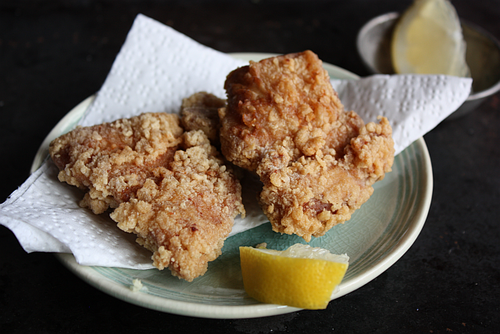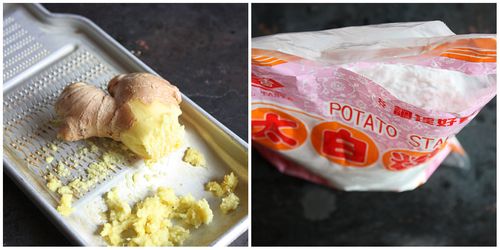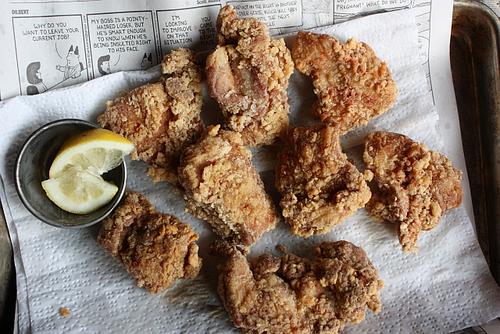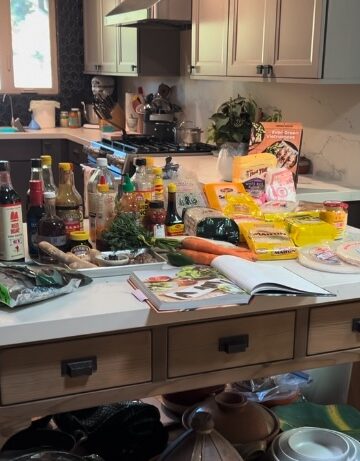
This year has been fabulous for Asian cookbooks. I
am not just talking about Asian Tofu! It’s in fine company with an outstanding
group of 2013 publications. While I’ve checked out Tracey Lister and Andreas
Pohl’s Vietnamese Street Food and Charles
Phan’s Vietnamese Home Cooking, I
hadn’t had the chance to dive into the non-Vietnamese ones, until now. This
fall, I was out of town for five weeks total. Phew, I’m back home working on
the banh mi cookbook. In between, I’m trying out recipes from autumn Asian cookbook releases that caught my eye.
The first one is Nancy Singleton Hachisu’s Japanese Farm Food, a work that takes a
non-fussy, matter-of-fact approach to Japanese cooking. Nancy lives in Japan, where she teaches home cooking and is married to an organic farmer. Their life is filled with straightforward food, much of
which is detailed in the cookbook. It’s a highly personal work, not meant to be
strict and authoritative, but casual and inviting. You can tell that Nancy put
a lot of love into her book. Some recipes require a trip to a Japanese market
but others, like this fried ginger chicken recipe (tori no kara age) are a doable with supermarket ingredients. Plug
in where you want and can. Sometimes the instruction are opaque and a little finesse is required. For example, when the oil temperature for frying the chicken wasn't specified, I clipped on a thermometer. The recipe had charming cues but I wanted a little more accuracy.
I chose this recipe because frankly, I never get
enough kara age when I order it at Japanese
restaurants. My husband and I politely divide up however much there is on the
plate. Making it at home was a fine workaround. We both got our fill.

The only ingredient that may challenge you is the potato starch. Buy it from a health
food market or specialty foods market in the flour aisle. Or, save money with
starch purchased from an Asian market. It’s fine, light stuff that flies so
watch out when working with it. When used as coating for deep-frying, potato
starch fries to a delicate crisp-chewiness, which doesn’t overwhelm the food
that it covers. (I use potato starch for Japanese fried agedashi tofu, a classic.) You can still taste the food that's been fried instead of being overwhelmed by a super crunchy coating.
That said, I strayed from Nancy’s recipe by double
frying some of the pieces to return their crispness. That was in spite of making just a half batch. I fried boneless
skinless thighs instead of skin-on thighs because I was too lazy to debone the thighs. (In the U.S., it's hard to find boneless thighs with their pajamas on them.). Finally, I served the fried chicken with wedges of lemon to cut the
richness. Dip the chicken in sauce and you throw off its balance of flavor.
Nancy’s spot on about reheating leftovers in a skillet; the toaster
oven, which I usually rely on, made the chicken wet with grease. The recipe
below was adapted from Japanese Farm Food (Andrews McNeel Publishing 2012).
Recipe
Japanese
Fried Ginger Chicken
Tori No Kara Age
Yields 4
servings as a main dish, 8 to 12 as a snack
Ingredients
- 4 large boneless,
skinless chicken thighs (about 1 ¾ pounds / 675 g total) - 1 tablespoon
grated fresh ginger - Scant ¼ cup /
60 ml Japanese or Korean soy sauce - 2 tablespoon
sake - Canola oil, for
deep-frying - About 1 cup
potato starch - Lemon wedges
Instructions
- Trim
excessive fat from the thighs (oh, if only it were that easy!), then cut them
into 2-inch (6 cm) rough pieces. With pieces that are more than 1 inch (3 cm)
thick, cut them open as if to butterfly the piece; they’ll fry faster. - In
a zip-top plastic bag, combine the chicken, ginger, soy sauce, and sake.
Marinate at room temperature for 1 hour or for best flavor, stick it in the fridge
for several hours or overnight. About 45 minutes before frying, take the
chicken from the fridge and let it sit at room temperature. - Heat
a good 1 inch (2.5 cm) of oil in a wok or medium saucepan over medium heat. Aim
for a temperature a little over 350F (180C). Have a baking sheet lined with a
layer of newspaper and paper towels, or just several layers of paper towels. - Meanwhile
put half of the potato starch into a shallow bowl. When the oil temperature
approaches 325F (160C), dredge about half of the chicken pieces in the starch,
coating them well. Gently drop them into the oil when it’s hot enough and fry
for about 5 minutes, stirring and turning, until golden brown and done. - Return
the oil to temperature, adjusting the heat as needed, before frying another batch,
adding more starch. After all the chicken has been fried, increase the
temperature to over 360F (185C). Briefly refry any pieces that have lost too
much of their crispness. Serve immediately with lemon wedges.
Adapted
from: Japanese Farm Food by Nancy
Singleton Hachisu
The
marinade in Nancy’s recipe is very straightforward. You can tweak the flavor,
if you like with garlic, for example. Or add a touch of sugar. If you’ve cooked from this book, share your
thoughts and experiences. Or, maybe you’re a Japanese fried chicken expert? How
do you make yours?
Related posts and recipes:
- Kaffir
Lime Fried Chicken inspired by Ruhlman’s Twenty - Best Korean Fried Chicken recipe (Yangnyeom Dak)
More recipes from 2012 Asian Cookbooks:
- Homemade Bun Rice
Noodles from Vietnamese Home
Cooking by
Charles Phan - Faux Viet Crab
Noodle Soup from Vietnamese
Street Food by Tracey Lister and Andreas Pohl - Pork
Belly, Pickled Mustard Greens and Tofu from Burma by Naomi Duguid - Soy-Glazed Black
Pepper Chicken from The Hakka Cookbook by Linda Anusasananan


















Anh Vu Ngoc says
I am looking forward to your new book. When it's going to be published, Andrea?
Andrea Nguyen says
Thanks much. The book won't be out till 2014. Hold on to your banh mi for now...
condospalillos says
i have cooked this recipe and i only can say...delicious